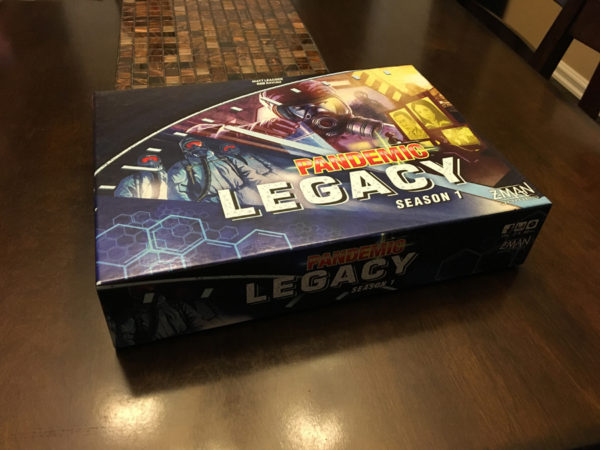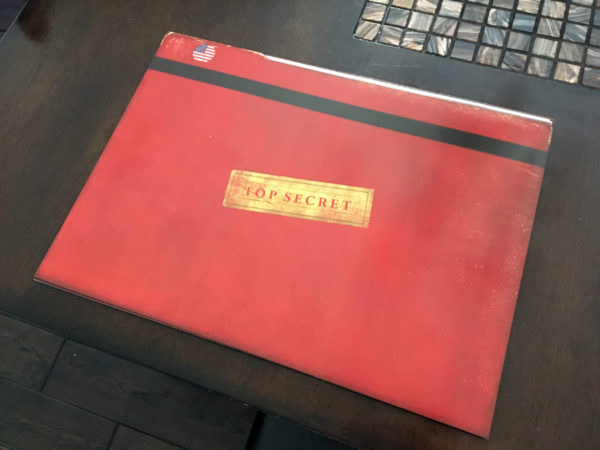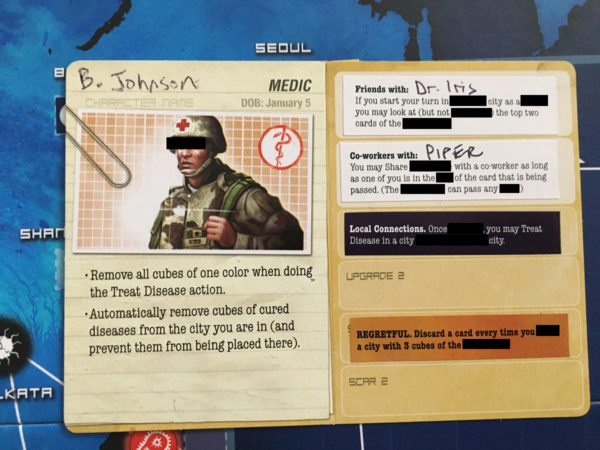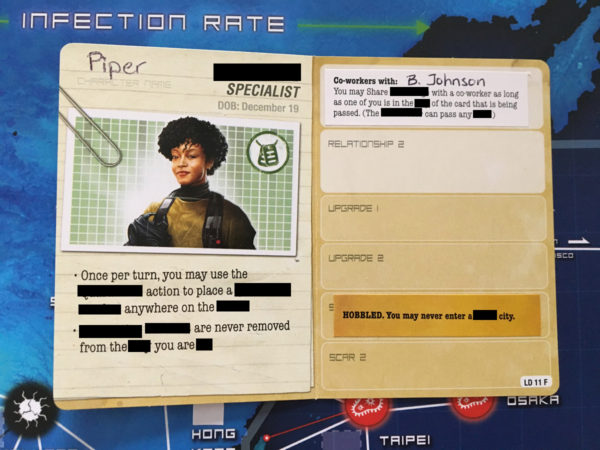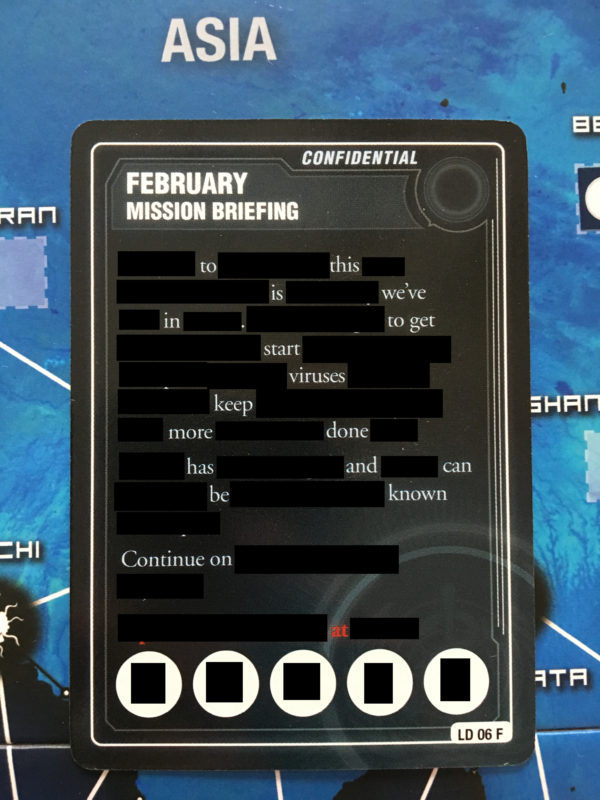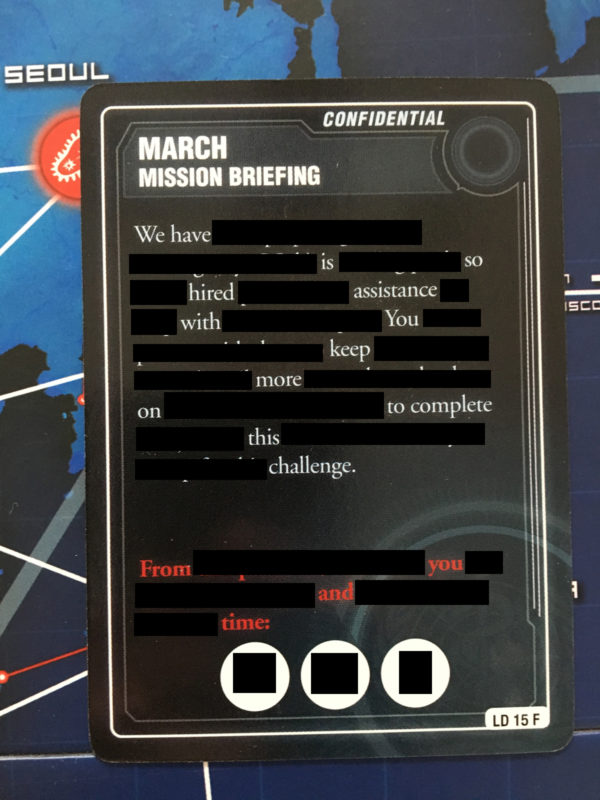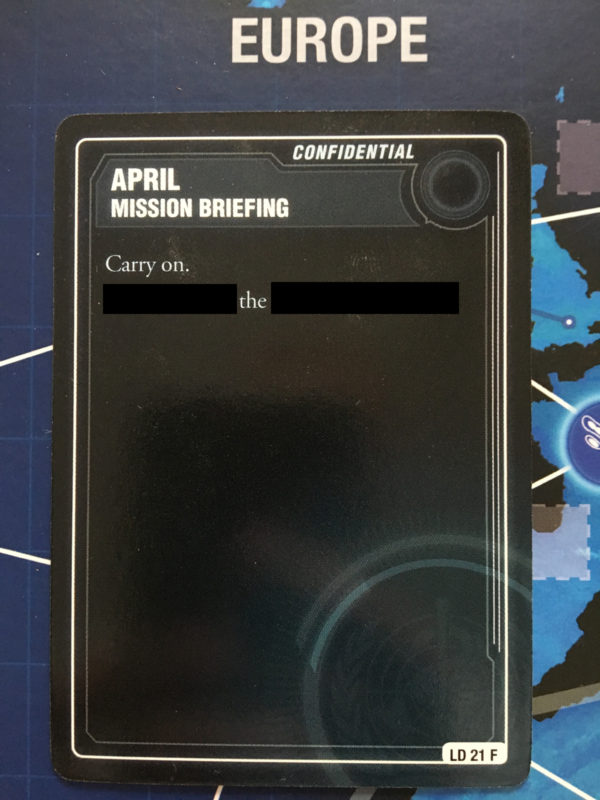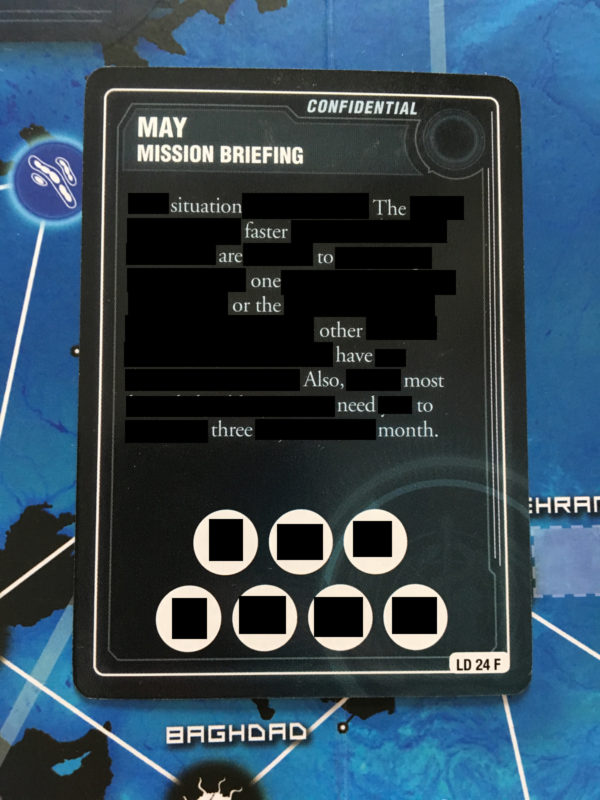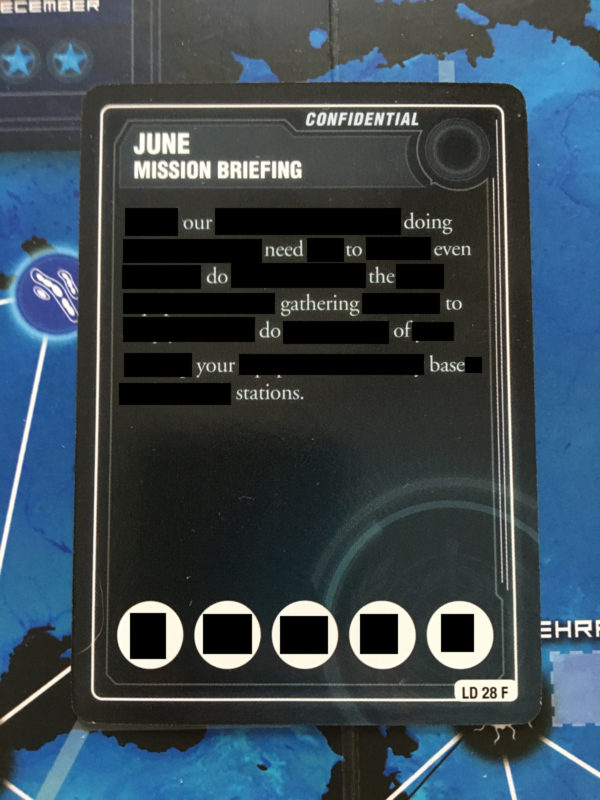As part of my 6×6 Gaming Challenge, I decided to add Pandemic Legacy to try to get a commitment out of my game group to go through this game from start to finish. We tried Risk Legacy long ago but it eventually fell apart and we never got to fully explore the game. I’m not sure how common this is with gaming groups but the fear of opening a legacy game, permanently destroying, adding, and altering the game state but never finishing it is so heavy that I’d rather have the game sit in shrink and never played than be played half-assed.
Something about the permanency of the decisions makes these games hard to enjoy (beyond those that would never want to deface their game in the first place). It’s odd how much pressure there is for a legacy game as it wants to be played in its entirety, regularly so that each new sessions rules aren’t forgotten, and with the same group of people. With my game group, this is difficult since we all have games (usually new) that we want to see on the table and since we don’t get together often enough to make sure everything has its chance, committing to 12 to 24 games of Pandemic Legacy was becoming increasingly difficult.
I decided to switch gears with this legacy setup and instead of going to my game group, I went to my wife. She is definitely a gamer but life and work have turned her into an adult (one of us had to do it) and so gaming was less and less available. She did, however, always like Pandemic so I thought I’d give it a shot.
After some convincing, she was on board. Funnily enough, it wasn’t the commitment to playing through the entire season that took convincing, it was the legacy system itself. I relived the whole geek culture reaction to the first legacy concept happen right before my eyes as she processed what this game was going to make us do. It’s funny that I’m so obsessed with games and the industry that I forgot just how foreign the legacy concept can be. She went through shock and disbelief (“We have to do what??”), anger and cynicism (“That is just dumb. You know they’re doing this just so you can buy the game over and over again.”), bargaining (“what if we just take pictures of the board state before we tear it down…”), and finally to acceptance (“fine. whatever.”).
Note: I’ll try to keep the rest of this as spoiler-free as possible but it will be almost impossible to not spoil even the tiny details. In any case, I have “[redacted]” major elements of the game in the images for your protection.
We started the game off picking our characters and working them up. This is one of my favorite aspects of the game as it gives the characters a quasi-RPG feel. I began the game with my favorite character of the Pandemic series, the Medic.
Bobdoh Johnson, or “Bobby D” as his friends call him, has been a terrific member of the Pandemic team. In the last 6 months of service, he’s been instrumental in fighting back the ravages of disease and staving off terrifying outbreaks. Through his heavy travels, he’s made many contacts and has helped even the weakest medical centers work through crises. Though he’s saved countless lives, his dreams are still troubled by a particularly brutal outbreak of Mad Fever in Seoul. That abnormally hot March would forever scar Johnson. To this day, he can’t help but stop and help cities on the verge of outbreak as his mind flashes back to the horrors of Seoul. Hopefully this won’t be his undoing.
Johnson’s best friend, the brilliant researcher, Dr. Iris, has been the key to the curing of these new diseases. While Johnson has been clearing out disease, Dr. Iris has been curing all the diseases in record time. This dynamic duo has led to a four month winning streak as the team can typically cure a disease in the first few turns and eradicate them quickly thereafter.
As new threats are uncovered, Piper, the Specialist, joined the team in May. Dr. Iris took a sabbatical to study these new threats more closely but Piper has kept the streak alive as the team cleared through May and June.
Game Summary
January (loss then win)
January was actually our toughest month as we ended up losing our first game. It was a combination of getting back into the rhythm and forgetting what to focus on that led to our downfall. Late January went much better and we were able to get in a rhythm.
February (win)
February was a breeze as we started with enough to cure a disease on the second turn and eradicate it a turn later. Quite possibly the easiest game of Pandemic I’d seen.
March (win)
March set up well but I got cocky and Johnson got caught in an outbreak in Seoul. It hasn’t seemed to slow him down much but it did make me play him a little more conservatively.
April (win)
This one was a bit odd in that we had things pretty well contained and then things started going bad very quickly. Luckily, we were able to end the month quickly before too much damage was done. From a design note, I was kind of curious if you could get into a situation in a legacy game where the game is no longer winnable due to damage done in the previous months.
May (win)
Due to some of the new events and damage done, we switched tactics and brought in Piper’s Specialist expertise. It took us a little bit of time to get used to the role and how it would interact with Johnson but the combo seemed to be even stronger given the upgraded board-state. Outbreaks have been the biggest issue in our previous game but we seemed to have that under control. We almost totally botched it by forgetting to pay attention to the player deck and the number of cubes out on the board. We ended up with only 5 player cards left in the deck by the time we sorted it all out and won the game. That cut it a little too close.
June (win)
Prepared for both the excess cubes we needed to manage and the inefficient time management we had in the previous month, June turned out to be a bit easier than the other months in this quarter. I kind of keep waiting for the other shoe to drop and we start getting our ass handed to us but so far so good.

